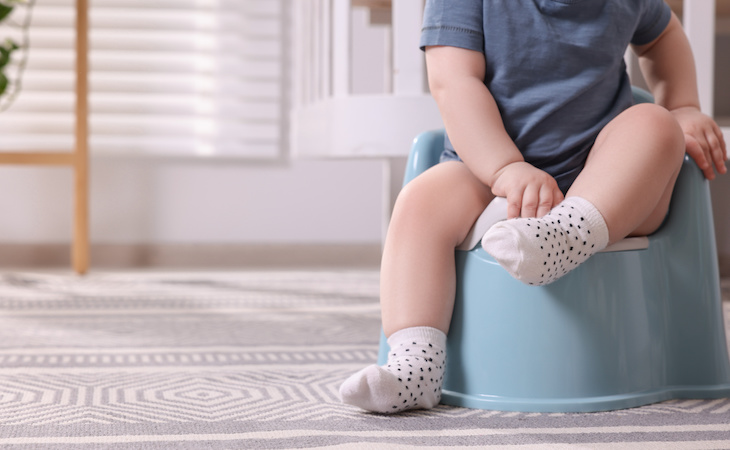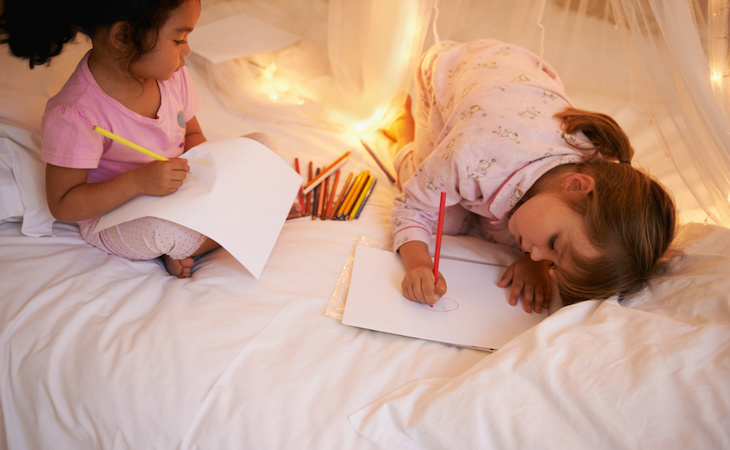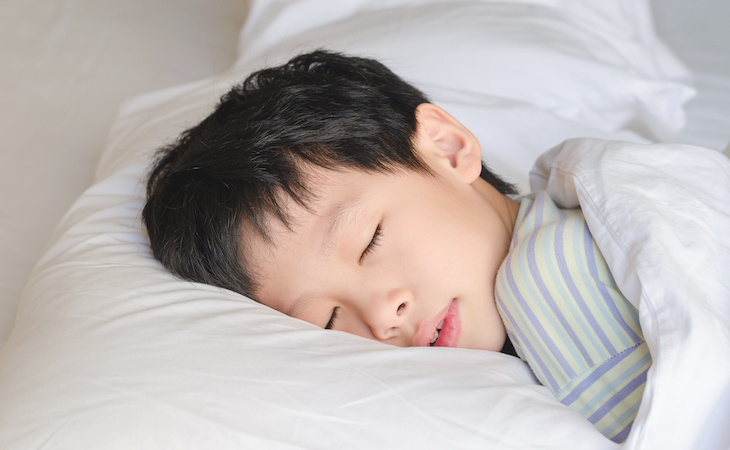Potty training is a developmental milestone of early childhood and a challenge for kids and grownups alike that makes for some…messy days.
But you may not realize that helping your child learn to use the toilet during the day doesn’t always occur at the same time as nighttime potty training and staying dry throughout the night.
That’s normal; it’s biologically and developmentally appropriate for children to stay dry throughout the day before they stay dry all night.
So, if your child is potty trained by day, what can you expect at night? We spoke with Ashanti Woods, MD, a pediatrician at Mercy Medical Center Baltimore, to find out.
When will my child be toilet trained at night?
As always, every child is different, and every child potty trains at their own pace. This said, on average, many children can successfully sleep overnight without needing a pull-up around age 4, Woods says.
“Between 3 and 5 years of age is when most children are potty-trained through the day and are ready to not have a pull-up on overnight,” he adds.
Remember: Just because an older sibling was trained by a certain point in time doesn’t mean that all children in the family will reach full potty training by that age, says Woods.
Also, children with speech delays can sometimes potty train later—and that’s OK. (Here’s why your child keeps wetting the bed.)
Are there any differences between the sexes?
While it’s not always the case, sometimes girls do tend to potty train a bit earlier overnight than boys, Woods says.
A few studies on the topic have suggested that boys tend to toilet train about six months later than girls as girls may develop some of the skills necessary for potty training slightly earlier than boys. But again: All kids are different.
How can I help my child throughout this stage?
One of the biggest things you can do, according to Woods, is look for signs that your child is ready to begin nighttime training.
“Signs include having a dry (or mildly damp) pull-up for several morning wake-ups in a row, a child taking off his or her pull-up overnight, or a child showing interest in using a portable potty overnight,” he says.
If you notice these things, then it could be a good time to start trying your child in undies or training pants (with a bit more fabric in them to help with absorption) at night and see how they do.
Between 3 and 5, kids also may understand the importance of emptying their bladders before bedtime—making that a good add-on to a bedtime routine.
When potty training—day or night—it’s also crucial that all caregivers (babysitters, daycare providers, teachers, and grandparents) are on the same page in terms of how often your child goes to the bathroom, how much they drink, what they’re wearing to bed, and so on.
This helps the child stick to a routine and know what to expect, making the process more seamless.
Should I use rewards like sticker charts for dry wakeups?
You could—and some parents also like some small rewards—a sticker, toy, book, or fruit—when kids reach milestones, such as a dry pull-up in the morning or three dry pull-ups in a week.
“However, caution should be used with incentives, and parents should praise both dry awakenings and best attempts of a dry pull-up as we want to encourage all children despite the outcome (positive reinforcement),” Woods explains. It’s up to you.
What types of products, if any, do I need?
When your child goes to the bathroom on the toilet (day or night!), their feet should be firmly on the ground to allow the pelvic floor muscles to relax, allowing the bladder to empty to the best of its ability, says Woods.
“If the muscles are not fully relaxed, some urine comes out, but probably not all,” he explains. That means you’ll likely want to have a step stool so that their feet are not dangling when seated. Many kids also like using a toilet ring that goes around the toilet seat, allowing them to sit more comfortably.
He says you may also want to keep a portable potty in your child’s bedroom and in the car for long (or short) trips. Pull-ups or pull-up-type diapers and training pants will also be useful throughout this timeframe.
Also worth knowing: “Children who are neurodivergent (such as having Autism Spectrum Disorder) may qualify for a prescription for pull-ups if written by their doctor as many insurance companies understand that certain medical diagnoses may lead to being fully potty trained at a later age,” says Woods.
If my child is really struggling, is there anything else I should know?
First, remember: Potty training isn’t linear. “It is a process and takes time,” says Woods.
But if your child is struggling, keep an eye on their bowel movements. “Children with challenges potty training may have some underlying constipation,” says Woods.
Constipation is common in kids, but, he notes, “good bowel hygiene—regular bowel movements—lead to bladder regularity. Constipation, on the other hand, leads to bladder irregularity.”
If you think your child might be constipated (they’re going three times a week or fewer or their stools are hard and hard to pass), then talk to your pediatrician.
Check out more helpful content for parents and families from Cassie Shortsleeve:
- 6 Common Questions About Room Sharing for Kids, Answered
- 7 Tips to Transition Your Child From Crib to Bed
- 6 Travel Sleep Tips All Parents of Babies and Toddlers Need








